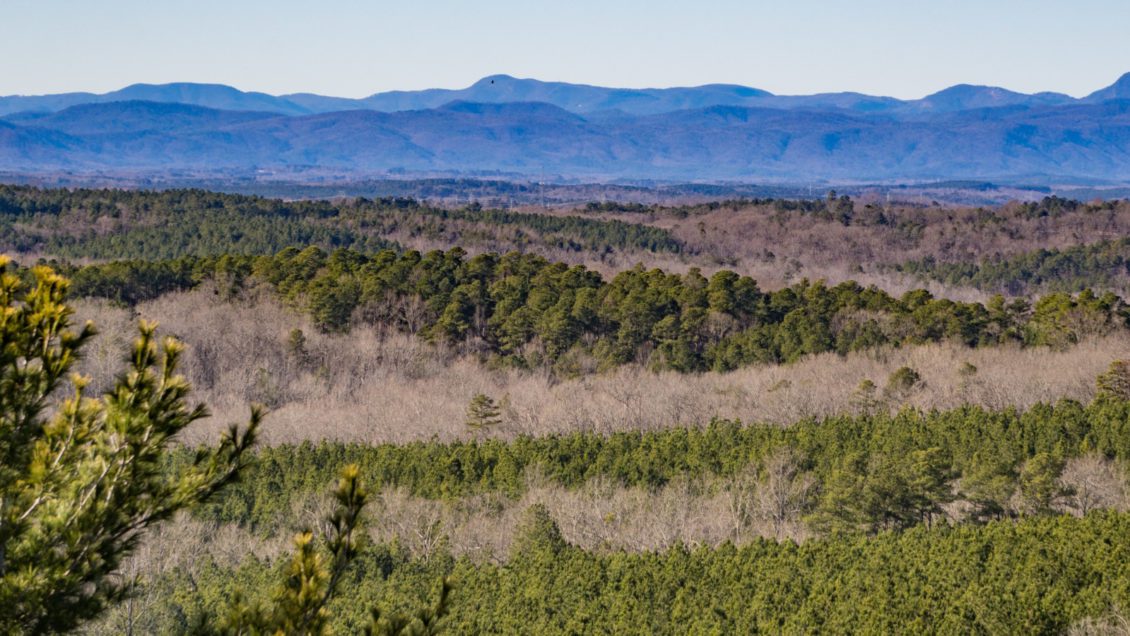[vid origin=”youtube” vid_id=”iK4_Cni6FjU” size=”medium” align=”right”]
CLEMSON — Researchers will spend the next few years on and off the trails of the Clemson University Experimental Forest to better understand its value to the numerous audiences that use it. Faculty and students from the parks, recreation and tourism management department expect to emerge with findings that will help illustrate how the forest is used and aid in its future management.
The 17,500-acre forest is managed for timber sales and production, but also acts as an outdoor laboratory for scientific research. Cyclists, horseback riders, hikers and hunters also use the forest for outdoor recreation.
Taylor Parker, a Ph.D. student and researcher on the project, said the forest has been used as a research setting for everything from soil and wildlife to recreation. He said the current project provides an important opportunity to finally turn the research lens on the forest as a whole.

“Right now, there are many people who don’t know this forest exists and many of the ones who do aren’t exactly sure what ‘experimental forest’ means,” Parker said. “These are still early stages, but we are optimistic that we can come up with a set of guiding principles and provide understanding of the values that various groups place on the forest.”
While Parker focuses on forest valuation, resilience and overall priorities, the department has assigned master’s students Taylor Lollar and Cole Little to drill down in detail on other aspects of forest use. Lollar will focus on past and current recreation assets of the forest, while Little will focus on the forest as an academic asset.
The team has most recently delved into the history of the forest that has framed the university for nearly a century. Parker said he was shocked to learn that until 1920, the forest was barren land. According to historical records and pictures, most of the timber was cut down for agricultural use. George H. Aull, an agricultural economist, started the Clemson Community Conservation Project in the 1930s to regrow the forest to address rampant soil erosion.
“Even more impressive is what the forest has become: there are certainly other university-owned public forests, but none are this large, this close to a campus center and this accessible for recreation,” Parker said. “Because of this, we see Clemson in a position to become a research leader when it comes to land use best practices and forest management by a university.”

Elizabeth Baldwin, associate professor in parks, recreation and tourism management, is overseeing the research. Baldwin has used the forest for teaching and undergraduate research since 2007. As an avid forest-user herself, she looks forward to seeing what answers — and further questions — the research will uncover.
“The big question is how can a system this large adapt to changing forces from inside and out while maintaining integrity in regards to Clemson’s overall mission,” Baldwin said. “We have to understand all of the needs for research so that we are anchored to our reason for the forest and so that we can bring that mission into relevant focus for the forest’s future use.”
Currently, Parker, Lollar and Little are spending a great deal of time walking trails, delving further into the history of the forest and meeting with the various audiences that use it. They’re also enlisting a small army of undergraduate students with clipboards to get as much survey data as possible from forest-users.

Parker said he is honored to have been selected by Baldwin to participate in the project. He has previously helped lead wetland and beach conservation projects in his native California, but he said the sheer size of the Clemson Experimental Forest research dwarfs any other project he has taken on. He looks forward to working further on the project with his fellow researchers as well as Russ Hardee, the forest’s manager; and Laura Stoner, director of Clemson’s Office of Land and Capital Asset Stewardship.
Parker’s work as a Ph.D. student is being funded in total by George Askew, Clemson’s vice president for public service and agriculture, and Patrick McMillan, Clemson’s Hilliard Professor of Environmental Sustainability and director of the South Carolina Botanical Garden. Parker said he will earn his Ph.D. one step at a time.
“There are hundreds of miles of trail across the forest, and within the next three years I’m going to walk every one of them,” Parker said.
Get in touch and we will connect you with the author or another expert.
Or email us at news@clemson.edu

